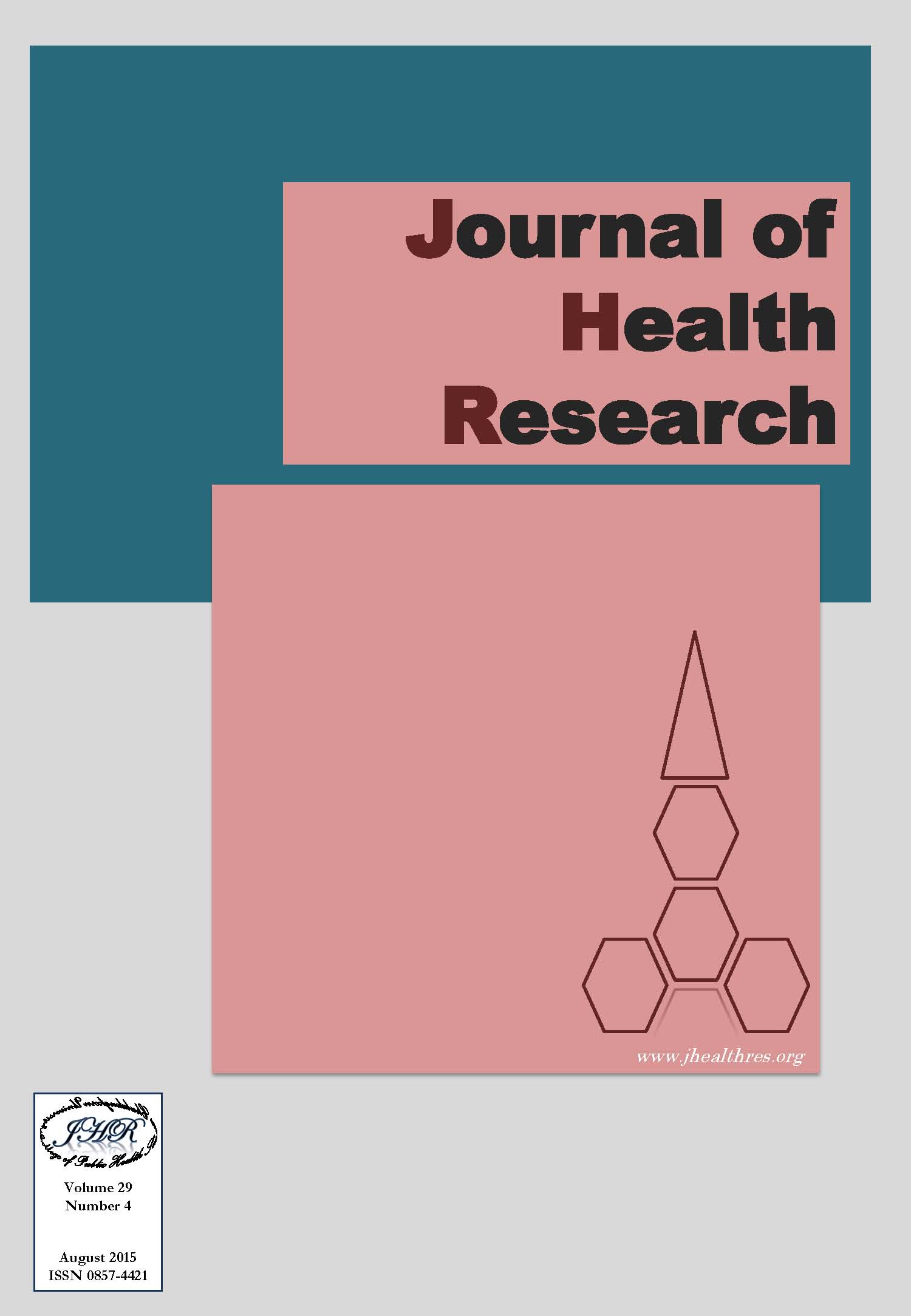Drinking Patterns and Their Predictive Factors : a Case Study of a Community in Phayao Province, Thailand
Keywords:
Predictive factors, Alcohol consumption, Rural community, ThailandAbstract
Background: Alcohol consumption is a significant public health concern in Thailand. This study aimed to explore patterns of alcohol consumption, and to identify predictive factors of alcohol consumption among people in a rural area of Phayao province where high prevalence of alcohol consumption has been reported in the past five years.
Method: A cross-sectional study was undertaken in which 160 people, aged over 15 years, participated. Data were collected by face-to-face interviews. Chi-square tests and multiple logistic regression were used to characterize predictive factors of alcohol consumption among the participants.
Results: Findings revealed that 51.2% of participants were female, and their average age was 49.75 years (SD=17.8). Only 16.2% reported current smoking. Over half (56.2%) had consumed alcohol in their lifetime, 40% drank in the previous year and 21.9% drank in the last month. Among those who drank in the previous year, 87.5% reported they drank with their friends, and 42.2% drank at their friends’ home. Nearly two-thirds (60.9%) reported that social drinking was an important factor in their drinking. The highest frequency of drinking reported in the previous year was 1-3 times a month (28.1%). The majority (89.1%) were identified as low-risk drinkers. Their preferences of beverage in the previous year were beer, dark spirits and clear spirits (25.6%, 21.2% and 19.4%, respectively). Following univariate analysis, seven factors emerged including: gender, smoking cigarettes, participation in community activities, a recent alcohol campaign in the community, peer pressure, cause, and place of drinking– were identified as being significantly associated with drinking (p<0.05). Multivariable analysis revealed only three factors to be predictive of alcohol consumption among people in the rural community: smoking (OR=8.07, 95%CI=2.69-24.12), being involved in community activities (OR=6.49, 95%CI=1.26-33.34), and male (OR=3.04, 95%CI=1.08-8.57).
Conclusion: Smoking and involving community activities were strong predictors of alcohol use. Hence, reduction of smoking and raising community alcohol awareness should be considered as key areas in attempts to reduce alcohol consumption among people in the community.






